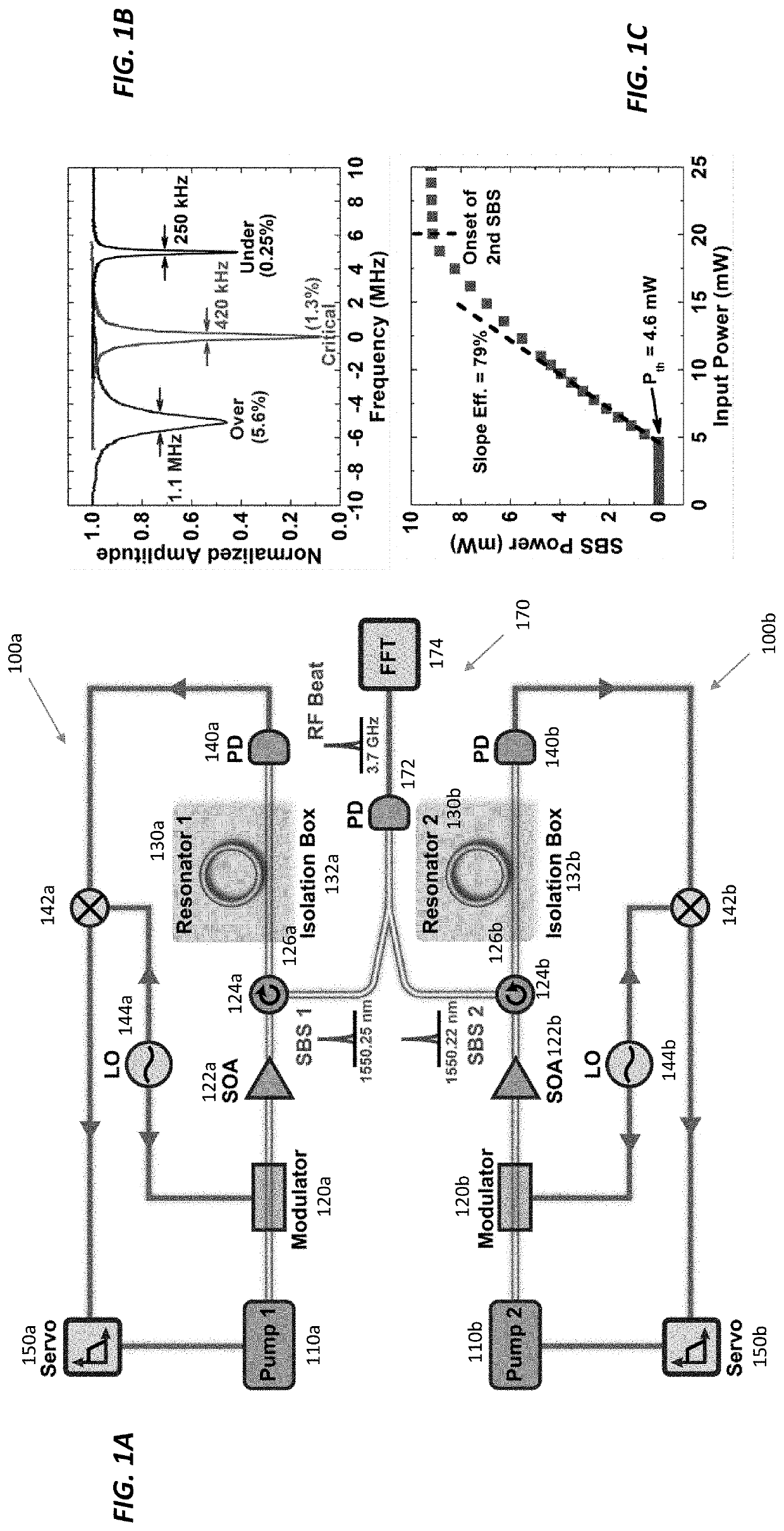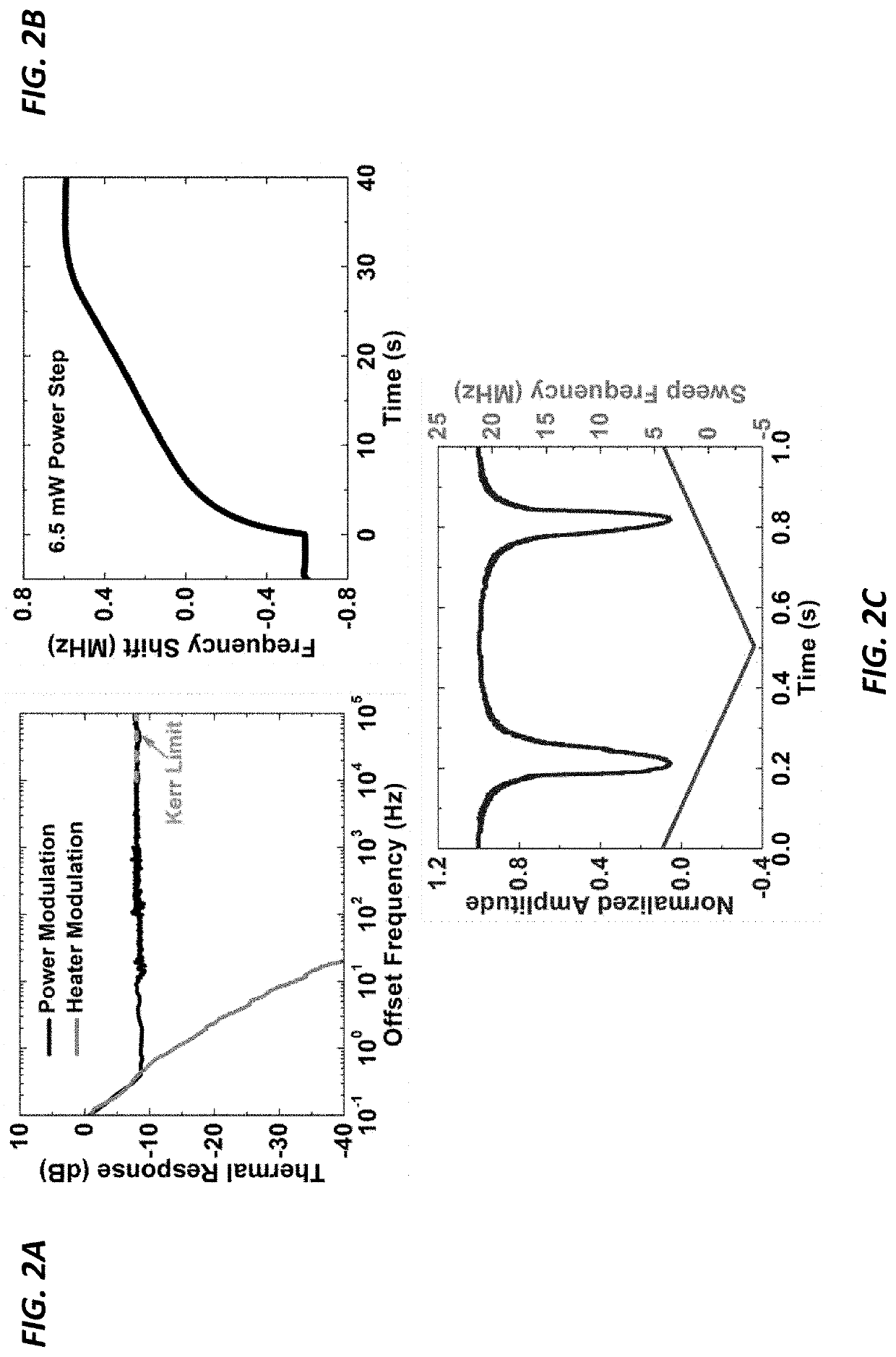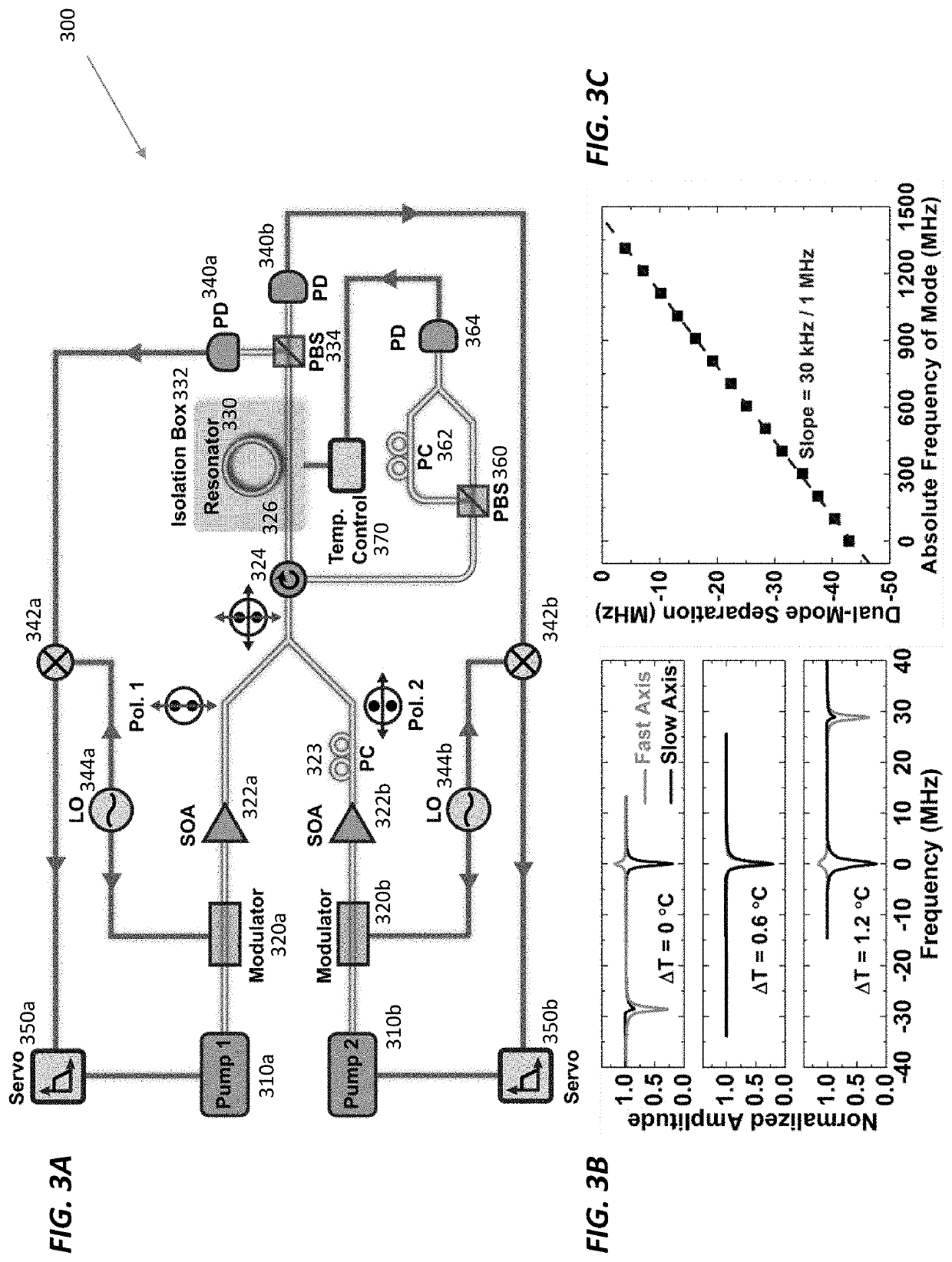Narrow-linewidth microcavity brillouin laser with suppressed temperature fluctuations
a microcavity brillouin and laser technology, applied in the direction of laser details, active medium shape and construction, basic electric elements, etc., can solve the problems of frequency wander, slow temperature drift of the laser's environment, frequency wander, etc., and achieve the effect of suppressing the noise of the pump sour
- Summary
- Abstract
- Description
- Claims
- Application Information
AI Technical Summary
Benefits of technology
Problems solved by technology
Method used
Image
Examples
Embodiment Construction
[0032]Increasing the mode volume of a high-Q resonator can increase a resonator's resilience to temperature fluctuations. This technique combined with the ability to generate lasing from the stimulated Brillouin scattering (SBS) nonlinearity of an otherwise passive resonator allows for the realization of an SBS laser that reaches a linewidth of 20 Hz. Owing to its temperature stability, the SBS laser noise at low Fourier frequencies is orders of magnitude lower than that of state-of-the-art microresonator lasers. The exquisitely narrow SBS line can be used as an ultra-precise sensor to detect and correct for minute temperature shifts as small as 85 nK, which is over two orders of magnitude smaller than the sensitivity with an otherwise identical dual-mode sensor employing a 270 Hz linewidth pump laser. Correcting such small shifts in the resonator's temperature reduces or prevents the long-term drift of the resonator's frequency.
[0033]These advances all serve to highlight the promis...
PUM
 Login to View More
Login to View More Abstract
Description
Claims
Application Information
 Login to View More
Login to View More - R&D
- Intellectual Property
- Life Sciences
- Materials
- Tech Scout
- Unparalleled Data Quality
- Higher Quality Content
- 60% Fewer Hallucinations
Browse by: Latest US Patents, China's latest patents, Technical Efficacy Thesaurus, Application Domain, Technology Topic, Popular Technical Reports.
© 2025 PatSnap. All rights reserved.Legal|Privacy policy|Modern Slavery Act Transparency Statement|Sitemap|About US| Contact US: help@patsnap.com



